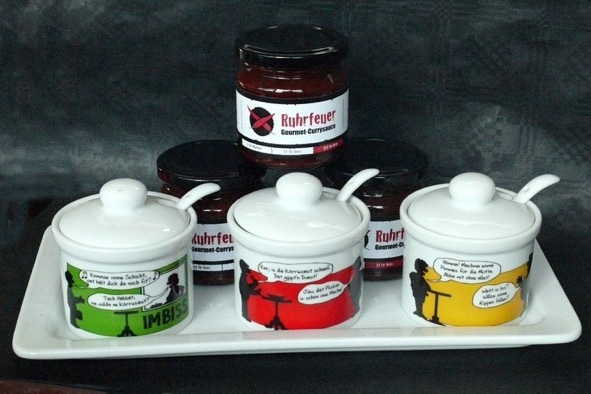Onglaze

(Graphic: Can AT 216 with On-glaze decal)
As the name suggests, there is an "onglaze decoration" on the glaze. In technical terms, unlike the inglaze decal, the decorative colors are not sunk into the glaze and have bonded with it, but lie on top. The layman likes to use the term "printing on porcelain" for this process, which unfortunately is completely wrong. Now porcelain has an extreme density and without thermal influence almost nothing can be bonded to it. Therefore, a firing is also required for the onglaze process.
The onglaze process has been known in Germany since 1725. One of the earliest manufacturers of onglaze decorations was probably the Fürstenberg porcelain manufactory. As early as 1771, the company produced tableware for Carl Wilhelm Frederick von Brunswick, which has been preserved to this day. In Asia, this type of refinement was already being used since about 1,370 BC, some 3,000 years earlier.
If you believe the manufacturers of commercial porcelain paints for hobby use, they reach a "dishwasher-safe" state already at 200° C. Now we know this designation exactly and have described it sufficiently in our product information. Ergo: dishwasher safe as a quality statement is not exact. The porcelain maker describes the temperature range of onglaze decorations between 750-900 °C (according to Friedl).
The modern development of porcelain colors makes it possible to reduce the soaking time of onglaze colors to approx. 640 °C. If such colors are provided with a so-called flow, it is possible to achieve really acceptable dishwasher resistance. Nevertheless, it should be noted that onglaze decorations should not be considered dishwasher-safe - to use this still common formulation once. In other words, the decorative colors of an onglaze decoration are vulnerable to chemical, thermal and mechanical stress in a dishwasher because they are not protected by the glaze. This also applies to a flow.
Onglaze decorations should always be rinsed by hand.
